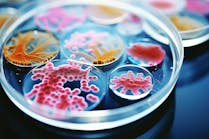WHO launches global framework for understanding the origins of new or re-emerging pathogens
Sept. 5, 2024
With the support of the Scientific Advisory Group for the Origins of Novel Pathogens (SAGO), the World Health Organization (WHO) has published a global framework to help Member States comprehensively investigate the origins of new and re-emerging pathogens.
While there are a number of tools available for investigating infectious disease outbreaks, this is one of the first unified, structured approaches to investigating the origins of a novel pathogen. This framework aims to fill that gap by providing a comprehensive set of scientific investigations and studies.
The WHO global framework outlines scientific investigations and studies for six technical elements:
- Early investigations of the first identified cases/ clusters / outbreaks to identify potential sources of exposure, collection of samples at the source, define the characteristics of the novel pathogen involved for establishment of diagnostic assays.
- Human studies: to understand the epidemiology including clinical presentation, modes of transmission, pathology and earliest presence in syndromic surveillance samples.
- Human/Animal interface studies to identify potential animal reservoirs, intermediate hosts and reverse zoonoses.
- studies to identify insect vectors or other sources of infection as well as earliest presence in the environment. …
- Genomics and Phylogenetics studies to identify precursor strains, genomic characteristics, evolution in intermediate hosts and humans and spatial distribution over time.
- Biosafety/Biosecurity studies to determine if a breach in laboratory or research activities may have been associated with the first cases.





